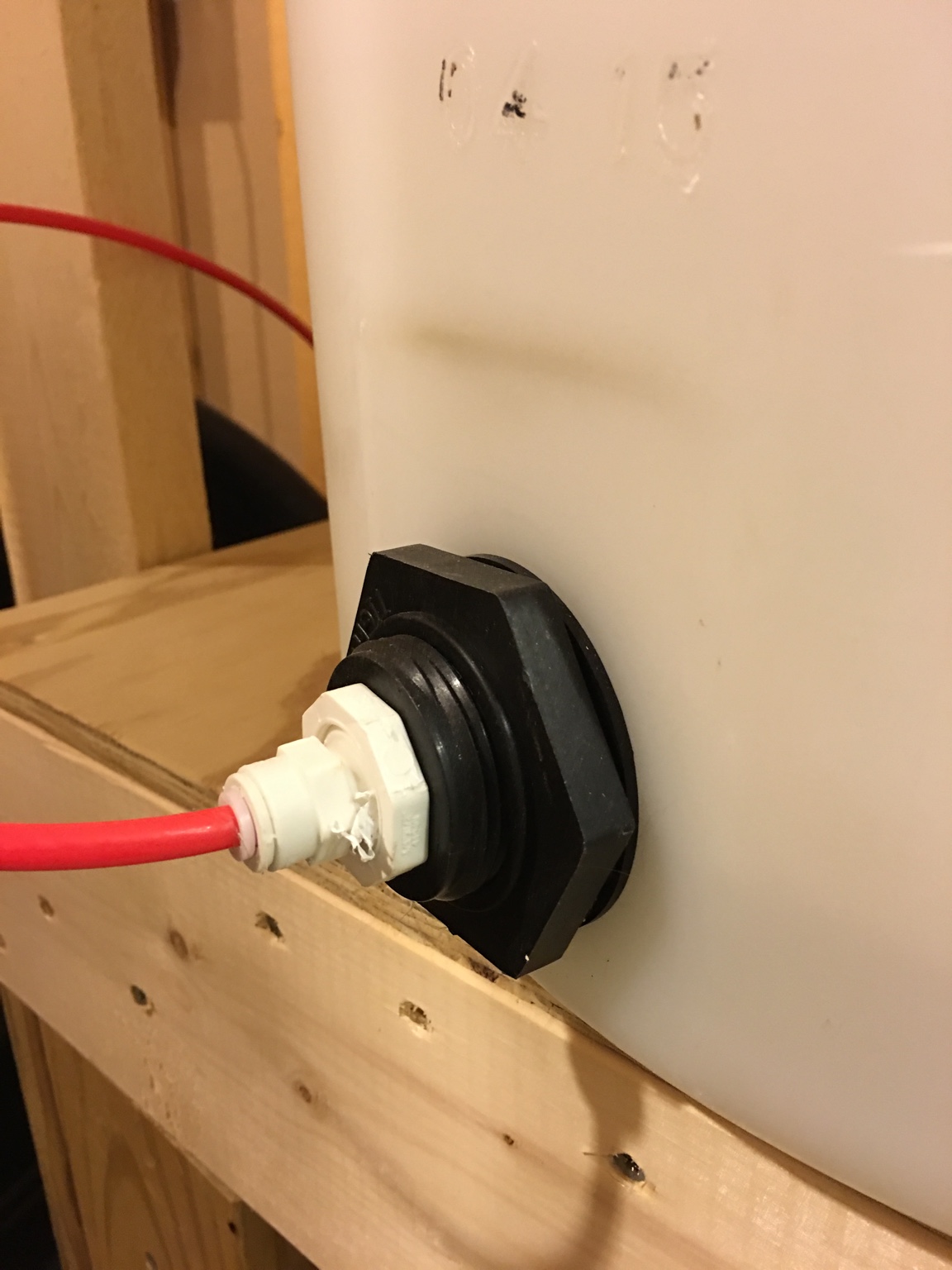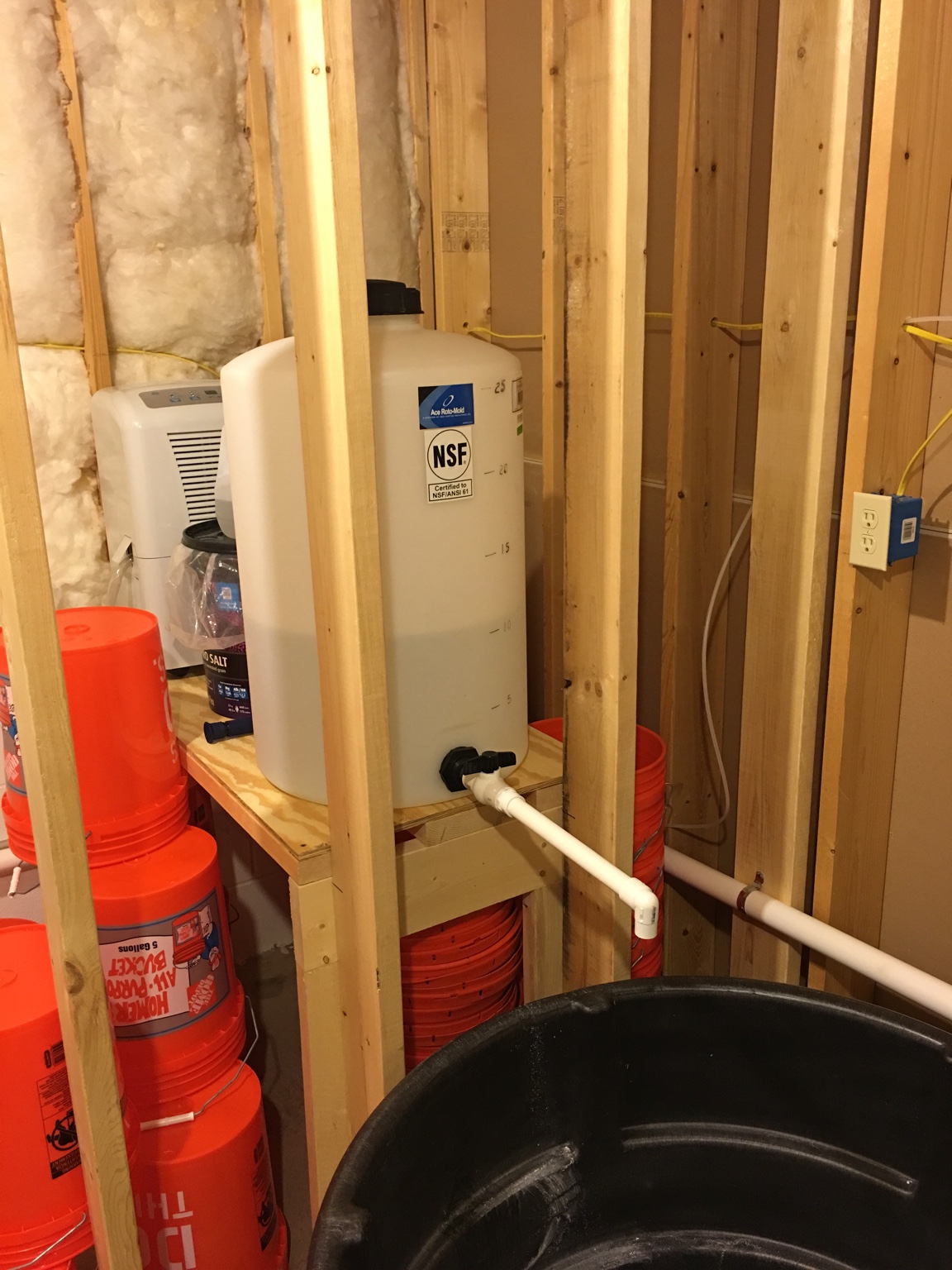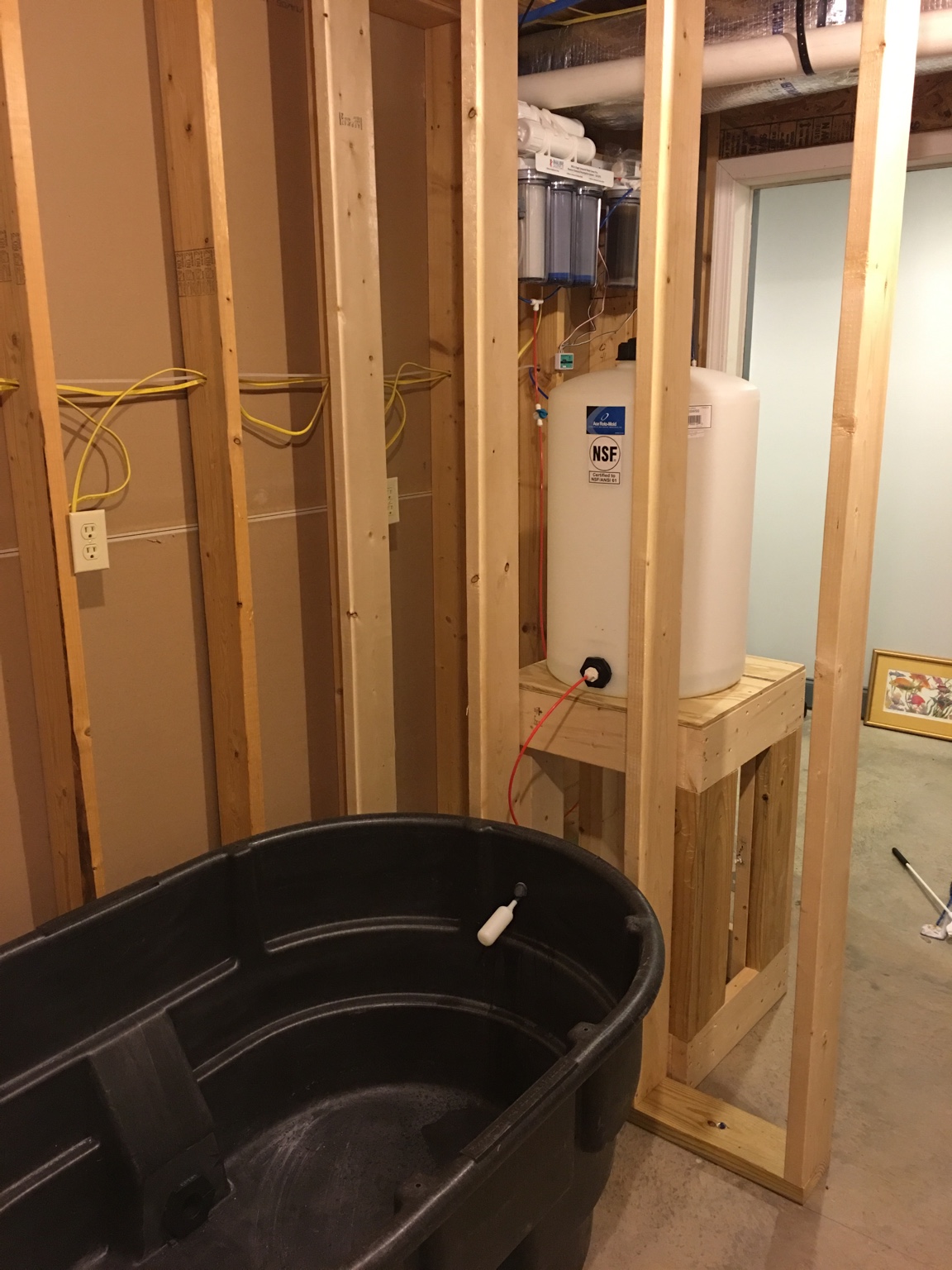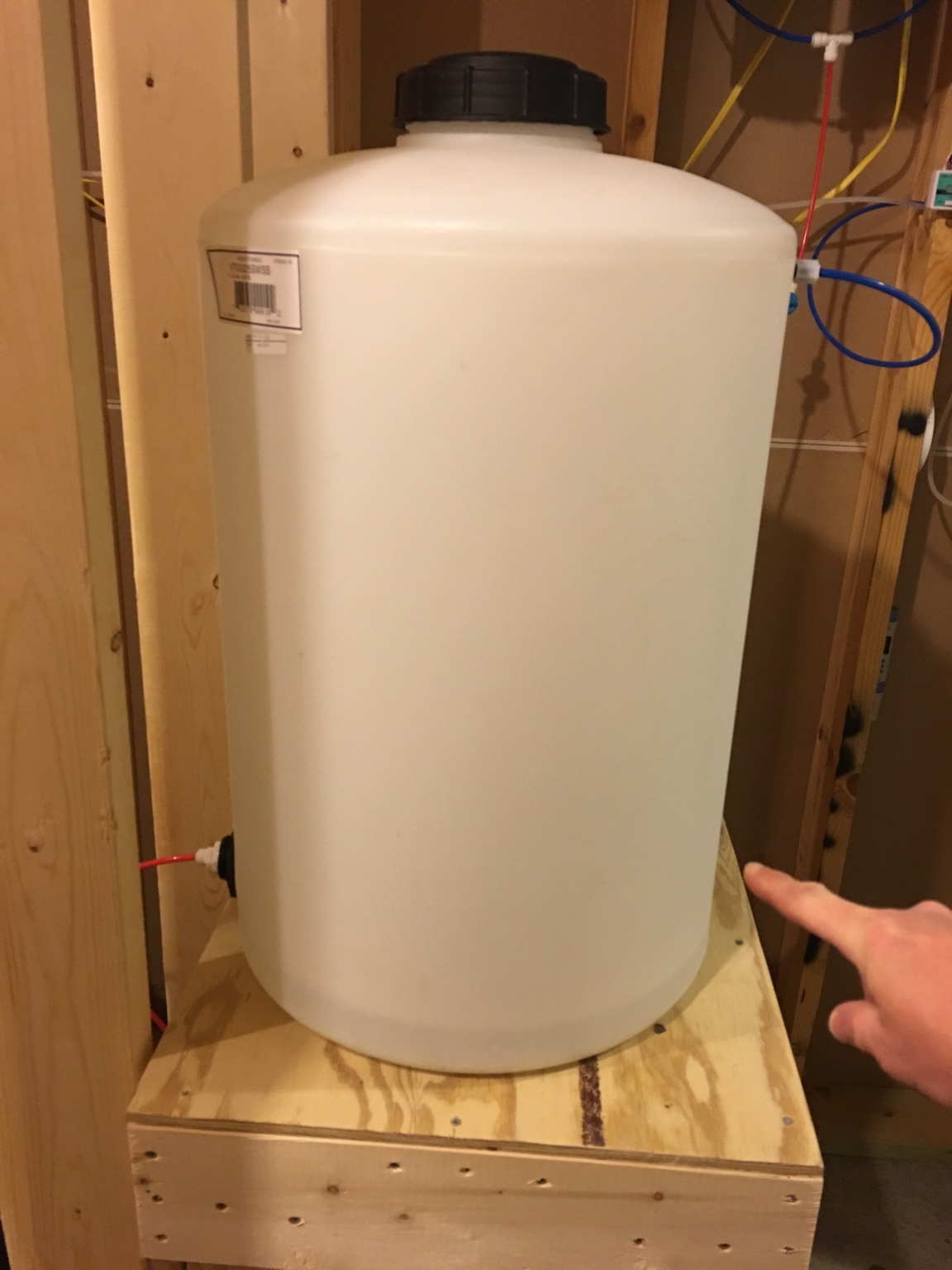I have two 25 gallon containers above my sump. They came with a built in 3/4 inch bulkhead.
The tanks are roto molded but were made with a flat surface for the bulkhead interface:

This one is used for salt mixing and water changes:

This one is used for a gravity fed ATO:

I would like to put a 3/4 inch ball valve on the opposite side of the ATO tank so I can have quick access to larger volumes of RO/DI if needed.

I have a couple spare 3/4 inch bulkheads laying around. The plastic on these tanks is rigid and not flexible. So I'm wondering, can I get away with using a bulkhead on this curved surface, or should I use a uniseal? Thoughts?
The tanks are roto molded but were made with a flat surface for the bulkhead interface:

This one is used for salt mixing and water changes:

This one is used for a gravity fed ATO:

I would like to put a 3/4 inch ball valve on the opposite side of the ATO tank so I can have quick access to larger volumes of RO/DI if needed.

I have a couple spare 3/4 inch bulkheads laying around. The plastic on these tanks is rigid and not flexible. So I'm wondering, can I get away with using a bulkhead on this curved surface, or should I use a uniseal? Thoughts?



















